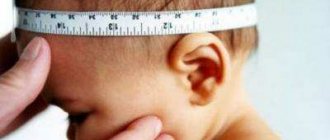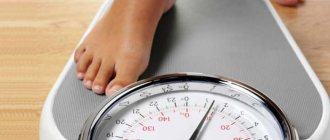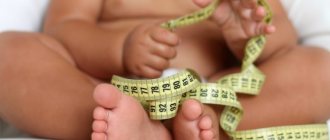Body Mass Index Calculator for Children and Teens
If an objective assessment is made, these figures will not be taken into account to determine whether the child's weight is within the normal range using BMI. Instead, the child's BMI is compared to the average of other children. This ensures that the developmental milestones experienced by children in certain age groups are taken into account. If a child has a higher body mass index than 97 percent of all children the same age, the child is considered overweight. BMI Calculator for Children and Teens is fast and free.
Girl
PercentYears5 (Severe Underweight)10 (Underweight)50 (Normal Weight)85 (Overweight)95 (Severe Obese)812.213.215.918.822.3913.013.716.419.823.41013.414.216.920.723.41113.814.617.720.822.91214.816.018.421.523.41315.215.618.922.124.41416.217.019.423.226.01516.917.620.223.227.61616.917.820.322.824.21717.117.820.523.425.71817.618.320.623.525.0Let's talk about the physical development of the child. The main indicators for its assessment are weight, height and their ratio - body mass index (BMI). BMI is not determined until the age of two. Therefore, from birth to two years, centile tables are used, in which all parameters are divided into 7 corridors.
How to use centile tables. The article presents three versions of tables separately for boys and girls: height, weight and weight-to-height ratios. So in the “Age” column, find the child’s age (in the tables the value is in months of life) and in the corresponding line look for which “Zone” (Corridor) the value of your child’s height or weight falls into. In total, the table is divided into 7 “Zones” (Corridors).
| Zone (Corridor) | 1 | 2 | 3 | 4 | 5 | 6 | 7 |
| Meaning | short stature or malnutrition | low but acceptable height or weight parameters | value below average | average height and weight in the population | above average value | high height or weight | extremely tall or overweight |
The assessment of physical development begins with the child’s growth. Afterwards the child’s weight is determined.
- The height and weight of the child, located in the green zone, corresponds to the norm.
- Height and weight that fall into the yellow zone correspond to borderline values. Additional monitoring of the child is required.
- If your height and weight fall into the red zone, you need to consult your pediatrician to identify various abnormalities that lead to impaired physical development.
To assess the degree of obesity or underweight, weight-to-height tables are used.
- Values falling into zone 1 are regarded as malnutrition.
- Values falling into the 2nd zone are regarded as low weight.
- Zones 3-5 are the norm.
- 6th zone excess weight.
- 7th zone obesity.
Boys
Height
Boys 0 months - 2 years.
| Age | Centiles | |||||||||||
| 3 | 10 | 25 | 75 | 90 | 97 | |||||||
| Zones | ||||||||||||
| 1 | 2 | 3 | 4 | 5 | 6 | 7 | ||||||
| 0 months | 48,0 | 48,9 | 50,0 | 53,2 | 54,3 | 55,1 | ||||||
| 1 | 50,5 | 51,5 | 52,8 | 56,3 | 57,5 | 58,7 | ||||||
| 2 | 53,4 | 54,3 | 55,8 | 59,5 | 61,0 | 62,1 | ||||||
| 3 | 56,1 | 57,0 | 58,6 | 62,4 | 64,0 | 65,5 | ||||||
| 4 | 58,6 | 59,5 | 61,3 | 65,6 | 67,0 | 68,7 | ||||||
| 5 | 61,0 | 61,9 | 63,4 | 67,9 | 69,6 | 70,9 | ||||||
| 6 | 63,0 | 64,0 | 65,6 | 69,9 | 71,3 | 72,5 | ||||||
| 7 | 65,0 | 65,9 | 67,5 | 71,4 | 73,0 | 74,1 | ||||||
| 8 | 66,5 | 67,6 | 68,9 | 73,0 | 74,5 | 75,7 | ||||||
| 9 | 67,8 | 68,8 | 70,1 | 74,5 | 75,9 | 77,1 | ||||||
| 10 | 68,8 | 69,9 | 71,3 | 76,1 | 77,4 | 78,2 | ||||||
| 11 | 69,9 | 71,0 | 72,6 | 77,3 | 78,9 | 80,4 | ||||||
| 12 | 71,0 | 72,0 | 73,8 | 78,5 | 80,3 | 81,7 | ||||||
| 15 | 72,9 | 74,3 | 76,0 | 81,2 | 83,4 | 84,9 | ||||||
| 18 | 75,0 | 76,5 | 78,4 | 84,4 | 86,5 | 88,2 | ||||||
| 21 | 77,2 | 78,6 | 80,8 | 86,8 | 88,2 | 91,0 | ||||||
| 24 | 79,4 | 81,0 | 83,0 | 88,4 | 92,0 | 93,8 | ||||||
Weight
Boys 0 months - 2 years.
| Age | Centiles | |||||||||||
| 3 | 10 | 25 | 75 | 90 | 97 | |||||||
| Zones | ||||||||||||
| 1 | 2 | 3 | 4 | 5 | 6 | 7 | ||||||
| 0 months | 2,4 | 2,7 | 3,0 | 3,7 | 4,0 | 4,4 | ||||||
| 1 | 3,1 | 3,5 | 3,8 | 4,5 | 5,2 | 5,6 | ||||||
| 2 | 3,9 | 4,3 | 4,6 | 5,5 | 6,2 | 6,6 | ||||||
| 3 | 4,5 | 4,9 | 5,4 | 6,4 | 7,0 | 7,5 | ||||||
| 4 | 5,2 | 5,6 | 6,2 | 7,2 | 7,9 | 8,4 | ||||||
| 5 | 5,8 | 6,2 | 6,8 | 7,9 | 8,6 | 9,1 | ||||||
| 6 | 6,4 | 6,8 | 7,4 | 8,6 | 9,2 | 9,7 | ||||||
| 7 | 6,9 | 7,4 | 7,9 | 9,1 | 9,8 | 10,3 | ||||||
| 8 | 7,4 | 7,8 | 8,4 | 9,6 | 10,3 | 10,8 | ||||||
| 9 | 7,8 | 8,3 | 8,9 | 10,1 | 10,9 | 11,3 | ||||||
| 10 | 8,0 | 8,6 | 9,2 | 10,6 | 11,3 | 11,8 | ||||||
| 11 | 8,3 | 8,9 | 9,5 | 11,0 | 11,8 | 12,3 | ||||||
| 12 | 8,6 | 9,1 | 9,8 | 11,5 | 12,2 | 12,7 | ||||||
| 15 | 9,2 | 9,6 | 10,5 | 12,2 | 12,9 | 13,5 | ||||||
| 18 | 9,6 | 10,2 | 11,0 | 12,8 | 13,8 | 14,2 | ||||||
| 21 | 10,1 | 10,6 | 11,5 | 13,5 | 14,3 | 14,9 | ||||||
| 24 | 10,6 | 11,1 | 12,0 | 14,1 | 14,9 | 15,4 | ||||||
Weight to height ratio
Boys 0 months - 4 years. (50-115 cm.)
| Body length | Centiles | |||||||||||
| 3 | 10 | 25 | 75 | 90 | 97 | |||||||
| Zones | ||||||||||||
| 1 | 2 | 3 | 4 | 5 | 6 | 7 | ||||||
| 50 | 2,8 | 2,9 | 3,1 | 3,5 | 3,7 | 3,9 | ||||||
| 51 | 2,9 | 3,1 | 3,3 | 3,7 | 3,9 | 4,1 | ||||||
| 52 | 3,1 | 3,2 | 3,4 | 3,8 | 4,0 | 4,3 | ||||||
| 53 | 3,3 | 3,4 | 3,6 | 4,1 | 4,3 | 4,6 | ||||||
| 54 | 3,4 | 3,6 | 3,8 | 4,3 | 4,6 | 4,8 | ||||||
| 55 | 3,6 | 3,8 | 4,0 | 4,6 | 4,9 | 5,3 | ||||||
| 56 | 3,9 | 4,1 | 4,3 | 4,9 | 5,3 | 5,7 | ||||||
| 57 | 4,1 | 4,3 | 4,6 | 5,2 | 5,7 | 6,1 | ||||||
| 58 | 4,3 | 4,6 | 4,6 | 5,5 | 6,1 | 6,5 | ||||||
| 59 | 4,6 | 4,8 | 5,1 | 5,8 | 6,4 | 6,9 | ||||||
| 60 | 4,8 | 5,1 | 5,4 | 6,1 | 6,8 | 7,3 | ||||||
| 61 | 5,0 | 5,4 | 5,7 | 6,5 | 7,2 | 7,7 | ||||||
| 62 | 5,3 | 5,6 | 6,0 | 6,8 | 7,5 | 8,0 | ||||||
| 63 | 5,6 | 5,9 | 6,3 | 7,2 | 7,8 | 8,4 | ||||||
| 64 | 5,8 | 6,2 | 6,6 | 7,5 | 8,2 | 8,8 | ||||||
| 65 | 6,1 | 6,5 | 6,9 | 7,9 | 8,5 | 9,1 | ||||||
| 66 | 6,4 | 6,8 | 7,2 | 8,2 | 8,8 | 9,4 | ||||||
| 67 | 6,6 | 7,0 | 7,4 | 8,5 | 9,1 | 9,7 | ||||||
| 68 | 6,9 | 7,3 | 7,7 | 8,8 | 9,4 | 10,0 | ||||||
| 69 | 7,1 | 7,6 | 8,0 | 9,1 | 9,7 | 10,2 | ||||||
| 70 | 7,4 | 7,8 | 8,2 | 9,4 | 10,0 | 10,5 | ||||||
| 71 | 7,7 | 8,1 | 8,5 | 9,7 | 10,2 | 10,8 | ||||||
| 72 | 7,9 | 8,4 | 8,8 | 10,0 | 10,5 | 11,1 | ||||||
| 73 | 8,2 | 8,4 | 9,1 | 10,3 | 10,7 | 11,3 | ||||||
| 74 | 8,4 | 8,9 | 9,4 | 10,6 | 11,0 | 11,6 | ||||||
| 75 | 8,7 | 9,2 | 9,7 | 10,9 | 11,5 | 11,9 | ||||||
| 76 | 8,9 | 9,3 | 9,8 | 11,1 | 11,6 | 12,2 | ||||||
| 77 | 9,0 | 9,4 | 9,9 | 11,2 | 11,8 | 12,3 | ||||||
| 78 | 9,2 | 9,6 | 10,1 | 11,4 | 11,9 | 12,5 | ||||||
| 79 | 9,3 | 9,7 | 10,1 | 11,5 | 12,1 | 12,7 | ||||||
| 80 | 9,5 | 9,9 | 10,4 | 11,6 | 12,2 | 12,8 | ||||||
| 81 | 9,8 | 10,1 | 10,5 | 11,8 | 12,4 | 13,0 | ||||||
| 82 | 9,9 | 10,3 | 10,7 | 12,0 | 12,6 | 13,2 | ||||||
| 83 | 10,1 | 10,5 | 10,9 | 12,2 | 12,8 | 13,4 | ||||||
| 84 | 10,3 | 10,7 | 11,0 | 12,3 | 13,1 | 13,7 | ||||||
| 85 | 10,5 | 10,9 | 11,3 | 12,6 | 13,3 | 13,9 | ||||||
| 86 | 10,6 | 11,0 | 11,5 | 12,8 | 13,5 | 14,3 | ||||||
| 87 | 10,7 | 11,2 | 11,7 | 13,0 | 13,8 | 14,5 | ||||||
| 88 | 10,9 | 11,4 | 11,8 | 13,3 | 14,0 | 14,7 | ||||||
| 89 | 11,2 | 11,6 | 12,0 | 13,5 | 14,2 | 14,9 | ||||||
| 90 | 11,3 | 11,8 | 12,2 | 13,8 | 14,5 | 15,2 | ||||||
| 91 | 11,4 | 11,9 | 12,5 | 14,0 | 14,7 | 15,4 | ||||||
| 92 | 11,6 | 12,1 | 12,6 | 14,2 | 15,0 | 15,6 | ||||||
| 93 | 11,9 | 12,4 | 12,9 | 14,5 | 15,2 | 15,8 | ||||||
| 94 | 12,1 | 12,6 | 13,1 | 14,7 | 15,5 | 16,1 | ||||||
| 95 | 12,4 | 12,8 | 13,4 | 15,0 | 15,6 | 16,3 | ||||||
| 96 | 12,6 | 13,0 | 13,7 | 15,3 | 15,9 | 16,6 | ||||||
| 97 | 12,8 | 13,3 | 13,9 | 15,5 | 16,2 | 16,8 | ||||||
| 98 | 13,0 | 13,5 | 14,2 | 15,8 | 16,5 | 17,1 | ||||||
| 99 | 13,2 | 14,5 | 15,1 | 16,1 | 16,8 | 17,4 | ||||||
| 100 | 13,5 | 14,0 | 14,8 | 16,3 | 17,1 | 17,6 | ||||||
| 101 | 13,7 | 14,2 | 15,1 | 16,6 | 17,4 | 18,0 | ||||||
| 102 | 14,0 | 14,5 | 15,3 | 17,0 | 17,7 | 18,3 | ||||||
| 103 | 14,2 | 14,7 | 15,5 | 17,2 | 18,0 | 18,6 | ||||||
| 104 | 14,4 | 15,0 | 15,8 | 17,5 | 18,3 | 19,0 | ||||||
| 105 | 14,6 | 15,2 | 16,1 | 17,7 | 18,4 | 19,2 | ||||||
| 106 | 14,9 | 15,5 | 16,4 | 18,1 | 18,8 | 19,6 | ||||||
| 107 | 15,2 | 15,8 | 16,7 | 18,5 | 19,2 | 20,0 | ||||||
| 108 | 15,5 | 16,2 | 17,0 | 18,8 | 19,6 | 20,5 | ||||||
| 109 | 15,7 | 16,4 | 17,3 | 19,2 | 20,0 | 21,0 | ||||||
| 110 | 16,0 | 16,7 | 17,5 | 19,6 | 20,6 | 21,5 | ||||||
| 111 | 16,2 | 17,0 | 17,8 | 20,0 | 21,0 | 22,0 | ||||||
| 112 | 16,4 | 17,2 | 18,1 | 20,5 | 21,5 | 22,5 | ||||||
| 113 | 16,6 | 17,4 | 18,4 | 20,8 | 21,9 | 23,0 | ||||||
| 114 | 16,9 | 17,6 | 18,7 | 21,2 | 22,4 | 23,5 | ||||||
| 115 | 17,0 | 17,9 | 19,0 | 21,6 | 22,7 | 24,0 | ||||||
Girls
Height
Girls 0 months - 2 years.
| Age | Centiles | |||||||||||
| 3 | 10 | 25 | 75 | 90 | 97 | |||||||
| Zones | ||||||||||||
| 1 | 2 | 3 | 4 | 5 | 6 | 7 | ||||||
| 0 months | 47,0 | 48,0 | 49,2 | 52,1 | 53,3 | 54,5 | ||||||
| 1 | 49,7 | 50,7 | 52,4 | 55,3 | 56,9 | 57,7 | ||||||
| 2 | 52,2 | 53,3 | 55,0 | 58,6 | 59,9 | 60,8 | ||||||
| 3 | 55,1 | 56,1 | 57,9 | 61,5 | 63,0 | 63,9 | ||||||
| 4 | 57,4 | 58,6 | 60,5 | 64,1 | 65,6 | 66,4 | ||||||
| 5 | 59,9 | 61,0 | 62,8 | 66,4 | 67,8 | 68,8 | ||||||
| 6 | 62,1 | 63,0 | 64,3 | 68,2 | 69,9 | 70,8 | ||||||
| 7 | 63,7 | 64,2 | 66,4 | 70,0 | 71,6 | 72,7 | ||||||
| 8 | 65,2 | 66,1 | 67,7 | 71,6 | 73,1 | 75,2 | ||||||
| 9 | 66,5 | 67,5 | 69,3 | 72,8 | 74,5 | 75,8 | ||||||
| 10 | 67,7 | 68,8 | 70,5 | 74,2 | 75,9 | 77,1 | ||||||
| 11 | 69,1 | 70,3 | 71,7 | 75,7 | 77,1 | 78,3 | ||||||
| 12 | 70,3 | 71,4 | 72,8 | 76,3 | 78,3 | 79,3 | ||||||
| 15 | 72,2 | 73,6 | 75,2 | 78,8 | 81,2 | 82,4 | ||||||
| 18 | 74,0 | 74,8 | 77,5 | 82,1 | 84,4 | 86,0 | ||||||
| 21 | 76,0 | 78,2 | 80,2 | 84,6 | 87,4 | 88,8 | ||||||
| 24 | 78,4 | 80,4 | 82,6 | 87,5 | 90,2 | 92,2 | ||||||
Weight
Girls 0 months - 2 years.
| Age | Centiles | |||||||||||
| 3 | 10 | 25 | 75 | 90 | 97 | |||||||
| Zones | ||||||||||||
| 1 | 2 | 3 | 4 | 5 | 6 | 7 | ||||||
| 0 months | 2,3 | 2,6 | 3,0 | 3,5 | 3,8 | 4,0 | ||||||
| 1 | 3,0 | 3,3 | 3,7 | 4,3 | 4,6 | 4,9 | ||||||
| 2 | 3,7 | 4,0 | 4,4 | 5,0 | 5,3 | 5,6 | ||||||
| 3 | 4,4 | 4,6 | 5,0 | 5,7 | 6,1 | 6,5 | ||||||
| 4 | 5,0 | 5,3 | 5,6 | 6,5 | 6,9 | 7,4 | ||||||
| 5 | 5,5 | 5,8 | 6,2 | 7,2 | 7,7 | 8,2 | ||||||
| 6 | 6,1 | 6,3 | 6,8 | 7,9 | 8,5 | 9,0 | ||||||
| 7 | 6,5 | 6,8 | 7,3 | 8,5 | 9,1 | 9,7 | ||||||
| 8 | 7,0 | 7,3 | 7,7 | 9,1 | 9,7 | 10,5 | ||||||
| 9 | 7,4 | 7,7 | 8,2 | 9,6 | 10,4 | 11,2 | ||||||
| 10 | 7,7 | 8,1 | 8,7 | 10,1 | 11,0 | 11,3 | ||||||
| 11 | 8,1 | 8,5 | 9,1 | 10,6 | 11,5 | 12,2 | ||||||
| 12 | 8,3 | 8,8 | 9,4 | 11,0 | 11,9 | 12,6 | ||||||
| 15 | 8,9 | 9,4 | 10,0 | 11,7 | 12,7 | 13,3 | ||||||
| 18 | 9,4 | 9,9 | 10,6 | 12,5 | 13,4 | 13,9 | ||||||
| 21 | 9,8 | 10,4 | 11,1 | 13,1 | 13,9 | 14,6 | ||||||
| 24 | 10,3 | 10,9 | 11,6 | 13,5 | 14,5 | 15,2 | ||||||
Weight to height ratio
Girls 0 months - 4 years. (50-115 cm.)
| Body length | Centiles | |||||||||||
| 3 | 10 | 25 | 75 | 90 | 97 | |||||||
| Zones | ||||||||||||
| 1 | 2 | 3 | 4 | 5 | 6 | 7 | ||||||
| 50 | 2,6 | 2,8 | 3,0 | 3,4 | 3,6 | 3,8 | ||||||
| 51 | 2,8 | 3,0 | 3,2 | 3,6 | 3,8 | 4,0 | ||||||
| 52 | 3,0 | 3,2 | 3,3 | 3,8 | 4,1 | 4,3 | ||||||
| 53 | 3,1 | 3,4 | 3,5 | 4,1 | 4,3 | 4,5 | ||||||
| 54 | 3,3 | 3,5 | 3,7 | 4,3 | 4,5 | 4,8 | ||||||
| 55 | 3,4 | 3,6 | 3,9 | 4,5 | 4,9 | 5,1 | ||||||
| 56 | 3,6 | 3,9 | 4,1 | 4,9 | 5,2 | 5,5 | ||||||
| 57 | 3,8 | 4,2 | 4,4 | 5,2 | 5,6 | 6,0 | ||||||
| 58 | 4,0 | 4,4 | 4,7 | 5,5 | 5,9 | 6,4 | ||||||
| 59 | 4,3 | 4,7 | 4,9 | 5,8 | 6,3 | 6,8 | ||||||
| 60 | 4,5 | 4,9 | 5,3 | 6,1 | 6,6 | 7,2 | ||||||
| 61 | 4,8 | 5,2 | 5,5 | 6,5 | 7,0 | 7,6 | ||||||
| 62 | 5,1 | 5,5 | 5,8 | 6,8 | 7,4 | 7,9 | ||||||
| 63 | 5,4 | 5,8 | 6,2 | 7,2 | 7,7 | 8,3 | ||||||
| 64 | 5,7 | 6,1 | 6,5 | 7,5 | 8,1 | 8,7 | ||||||
| 65 | 6,0 | 6,4 | 6,8 | 7,8 | 8,4 | 9,0 | ||||||
| 66 | 6,3 | 6,6 | 7,1 | 8,1 | 8,7 | 9,3 | ||||||
| 67 | 6,6 | 6,9 | 7,4 | 8,4 | 9,0 | 9,6 | ||||||
| 68 | 6,8 | 7,2 | 7,6 | 8,7 | 9,3 | 9,9 | ||||||
| 69 | 7,1 | 7,4 | 7,9 | 9,0 | 9,6 | 10,2 | ||||||
| 70 | 7,4 | 7,7 | 8,2 | 9,2 | 9,9 | 10,5 | ||||||
| 71 | 7,5 | 7,9 | 8,4 | 9,5 | 10,2 | 10,8 | ||||||
| 72 | 7,8 | 8,2 | 8,7 | 9,7 | 10,4 | 11,0 | ||||||
| 73 | 8,0 | 8,4 | 8,9 | 10,0 | 10,7 | 11,2 | ||||||
| 74 | 8,3 | 8,7 | 9,2 | 10,2 | 10,9 | 11,4 | ||||||
| 75 | 8,5 | 8,9 | 9,4 | 10,5 | 11,2 | 11,6 | ||||||
| 76 | 8,8 | 9,1 | 9,6 | 10,7 | 11,3 | 11,7 | ||||||
| 77 | 8,9 | 9,2 | 9,7 | 10,9 | 11,5 | 11,8 | ||||||
| 78 | 9,0 | 9,3 | 9,9 | 11,1 | 11,6 | 11,9 | ||||||
| 79 | 9,1 | 9,5 | 10,0 | 11,2 | 11,7 | 12,0 | ||||||
| 80 | 9,3 | 9,7 | 10,2 | 11,3 | 11,8 | 12,2 | ||||||
| 81 | 9,4 | 9,9 | 10,3 | 11,5 | 12,0 | 12,4 | ||||||
| 82 | 9,5 | 10,0 | 10,5 | 11,6 | 12,2 | 12,6 | ||||||
| 83 | 9,7 | 10,2 | 10,6 | 11,8 | 12,4 | 12,8 | ||||||
| 84 | 9,8 | 10,3 | 10,8 | 12,0 | 12,6 | 12,9 | ||||||
| 85 | 10,0 | 10,4 | 10,9 | 12,1 | 12,8 | 13,2 | ||||||
| 86 | 10,2 | 10,5 | 11,1 | 12,3 | 12,9 | 13,4 | ||||||
| 87 | 10,4 | 10,7 | 11,3 | 12,6 | 13,2 | 13,6 | ||||||
| 88 | 10,6 | 10,9 | 11,5 | 12,8 | 13,4 | 13,8 | ||||||
| 89 | 10,7 | 11,2 | 11,7 | 13,0 | 13,6 | 14,0 | ||||||
| 90 | 11,0 | 11,3 | 11,9 | 13,3 | 13,9 | 14,4 | ||||||
| 91 | 11,2 | 11,5 | 12,1 | 13,5 | 14,1 | 14,6 | ||||||
| 92 | 11,4 | 11,8 | 12,4 | 13,7 | 14,3 | 14,8 | ||||||
| 93 | 11,6 | 12,0 | 12,6 | 13,9 | 14,5 | 15,1 | ||||||
| 94 | 11,8 | 12,3 | 12,8 | 14,1 | 14,8 | 15,3 | ||||||
| 95 | 12,2 | 12,5 | 13,1 | 14,4 | 15,1 | 15,6 | ||||||
| 96 | 12,3 | 12,8 | 13,3 | 14,7 | 15,3 | 15,8 | ||||||
| 97 | 12,6 | 13,0 | 13,6 | 15,0 | 15,6 | 16,1 | ||||||
| 98 | 12,9 | 13,3 | 13,8 | 15,3 | 15,9 | 16,5 | ||||||
| 99 | 13,1 | 13,5 | 14,1 | 15,5 | 16,3 | 16,9 | ||||||
| 100 | 13,4 | 13,8 | 14,4 | 15,8 | 16,5 | 17,2 | ||||||
| 101 | 13,6 | 14,0 | 14,6 | 16,2 | 17,0 | 17,6 | ||||||
| 102 | 13,8 | 14,3 | 14,9 | 16,5 | 17,4 | 18,1 | ||||||
| 103 | 14,0 | 14,5 | 15,2 | 16,9 | 17,8 | 18,5 | ||||||
| 104 | 14,3 | 14,7 | 15,4 | 17,3 | 18,2 | 19,0 | ||||||
| 105 | 14,5 | 14,9 | 15,7 | 17,7 | 18,6 | 19,4 | ||||||
| 106 | 14,7 | 15,2 | 16,0 | 18,0 | 19,0 | 19,9 | ||||||
| 107 | 14,9 | 15,5 | 16,3 | 18,4 | 19,4 | 20,3 | ||||||
| 108 | 15,1 | 15,7 | 16,7 | 18,8 | 19,8 | 20,7 | ||||||
| 109 | 15,3 | 16,0 | 16,9 | 19,2 | 20,2 | 21,1 | ||||||
| 110 | 15,6 | 16,3 | 17,2 | 19,5 | 20,6 | 21,6 | ||||||
| 111 | 15,8 | 16,6 | 17,5 | 19,8 | 21,0 | 22,0 | ||||||
| 112 | 16,2 | 16,8 | 17,8 | 20,3 | 21,5 | 22,4 | ||||||
| 113 | 16,4 | 17,2 | 18,2 | 20,6 | 21,9 | 22,8 | ||||||
| 114 | 16,7 | 17,3 | 18,4 | 21,1 | 22,3 | 23,3 | ||||||
| 115 | 17,1 | 17,7 | 18,7 | 21,4 | 22,7 | 23,7 | ||||||
BMI in children over 2 years of age
To assess the ratio of weight to height in children over 2 years of age, Body Mass Index (BMI) charts are used, separately for boys and girls.
Distribution of BMI in boys 2-20 years old
Distribution of BMI in girls 2-20 years old
Body mass index (BMI) can be calculated using the formula:
BMI = body weight (kg) / (height in m)².
Then use the chart to find which zone your child’s BMI falls into. The blue color indicates the state of malnutrition (extremely low weight relative to height), and the red color indicates the obesity zone. Yellow color indicates pre-obesity (high weight). The green zone contains normal age-specific BMI values.
You can read what risks are associated with high or low BMI values in the article “Body Mass Index in Adults”. But remember that the Bioimpedance Analysis (BIA) method or bioimpedance analysis most accurately displays the amount of adipose tissue when it is in excess.
Boy
PercentYears5 (Severe Underweight)10 (Underweight)50 (Normal Weight)85 (Overweight)95 (Severe Obese)812.514.216.419.322.6912.813.717.119.421.61013.914.617.121.425.01114.014.317.821.223.11214.614.818.422.024.81315.616.219.121.724.51416.116.719.822.625.71517.017.820.223.125.91617.818.521.023.726.01717.618.621.623.725.81817.618.621.824.026.8Child BMI Chart: Coners, Hebebrand, Heseker, Himmelmann, Remschmidt, Shepherd, 1996
BMI for Children and Teens
Abbreviated primarily as BMI, Body Mass Index is a measure that helps judge a Person's body weight. To calculate this, Weight is divided by Height multiplied by itself. The resulting Value does not include the proportion of associated tissue types and Height, so inaccuracies and misconceptions may occur if you use the Body Mass Index as your sole assessment measure. For example, athletes often have a high BMI without being overweight. However, BMI is accurate in adults as a meaningful indicator of body weight that can be used to classify underweight, normal weight, or overweight.
In children and adolescents, however, assessment is even more difficult than in adults because there are large individual differences in development. In addition to Height and Weight, therefore, we must also use Age and Gender. The obtained data are compared with the average data of children of the same age and gender. Children whose BMI is higher than 97% of their peers of the same sex are obese, children belonging to the 3% with a low BMI are underweight. However, since growth phases can be very different in children and can be compared with each other, it is therefore always necessary to consult a pediatrician to assess weight and possible negative effects.
Child height and weight calculator
All parents should have an idea of how well their baby is developing. Does the child keep up with the norms for weight and height or overtake them? To determine this, we suggest you use our height and weight calculator
. It gives a full assessment of these indicators, taking into account age, (with an accuracy of one day), and also calculates the BMI indicator (body mass index).
All values, methods and recommendations are taken from the materials of the WHO (World Health Organization), which conducted a large-scale study on the development of children of various ages, nationalities and countries.
Children's scales, medical Tanita BD-815MA
(2 reviews)
38,000 rub.
Children's scales, medical Tanita BD-585
(1 reviews)
8,600 rub.
Children's medical scales Tanita BD-590
(1 reviews)
4,600 rub.
Children's medical scales Tanita 1583
(2 reviews)
9,000 rub.
Children's medical scales Tanita 1584
(7 reviews)
RUB 7,800
View all products in the category: Baby scales for newborns (up to 20 kg)
Height (body length)
Body length is usually measured in children under two years of age. After two years, height is measured in a standing position accordingly. There may be a difference of 1 cm between height and weight, which may affect the evaluation result. In this case, if the height is indicated for a child under two years old, for the accuracy of the calculation it is converted into length by the calculator and vice versa.
Height is one of the most important indicators for assessing a child’s development. It is recommended to measure it every month. (See growth centile tables for more details).
Ratings of “short” and “very short” may indicate a developmental delay or that the child was born premature.
A “very high” rating, in turn, may also indicate the presence of an endocrine disorder. However, if at least one of the parents is tall, most likely such height is the norm in this particular case, but to be sure, it is still worth consulting a doctor.
Possible growth estimates:
Very short: Significant stunting, which may be accompanied by excess weight. A specialist examination is necessary to determine the cause and eliminate growth retardation. Stunted: Stunted growth also sometimes leads to excess weight. Consultation with a physician is recommended. Below average: The child is short, but his height is within the normal range.. Average: The child is of average height, like most healthy children. Above average: Tall child, height within normal limits. High: This height is rare, is mainly hereditary and cannot indicate the presence of any abnormalities. Very tall: This height can be either normal if you have tall parents, or a sign of an endocrine disease. We recommend consulting with specialists. Height does not correspond to age: Height does not correspond to age - there may be an error when entering indicators. Please check the data and use the calculator again. If the data is correct, this is a clear deviation from the norm. A detailed examination by a specialist is necessary.
Child's weight
Weight itself, without taking into account height and other data, does not provide a deep assessment of the child’s development.
However, the “Low weight” and “Extremely high weight” ratings are sufficient for consultation with a doctor (see weight centile tables for more details). Possible weight estimates:
Severe underweight, extremely low weight: There is a high probability that the child is suffering from malnutrition. Immediate examination by a doctor is necessary. Underweight, low weight: The child’s body is probably exhausted, a specialist examination is necessary. Less than average: Weight is in the lower limits of the normal weight for the specified age. Average: The child is of average weight, the same as most healthy children. Greater than Average: When receiving this rating, weight should be estimated based on BMI (body mass index). Very large: When obtaining this estimate, weight should be estimated based on BMI (body mass index). Weight does not correspond to age: There may have been an error when entering data. If all the data is true, most likely the child has problems with height or weight development (see height and BMI estimates). We definitely recommend consulting with an experienced doctor.
Body mass index
To assess the harmonious development of a child, it is customary to look at the ratio of height and weight - Body Mass Index (BMI). This indicator allows you to most accurately determine deviations in the child’s weight, or, conversely, shows that the child’s weight in relation to height for his age is normal.
It should be understood that this BMI indicator is different for each child’s age and even more so differs from the indicators of an adult, so this calculator necessarily takes into account both the height and age of the child for the correct calculation (see BMI centile tables)
Body mass index estimates:
Severe underweight: Severe wasting of the body. Nutritional correction is necessary as prescribed by a doctor. Underweight: Exhaustion. Nutritional correction is necessary as prescribed by a doctor. Low weight: Lower limit of normal. The child weighs less than most of his peers. Normal: Optimal ratio of height and weight. Increased weight: Upper limit of normal. The child weighs slightly more than most of his age. In the future, there is a risk of gaining excess weight. Overweight: The child is overweight. It is recommended to adjust your diet as prescribed by your doctor. Obesity: It is necessary to adjust the diet as prescribed by the doctor and increase the child’s physical activity. Cannot be assessed: Your BMI readings are much higher than normal; you may have made a mistake when indicating your height and weight. If the data is correct, then the child is likely to be severely obese and the help of an experienced doctor is needed. Go to the section: scales for newborns








